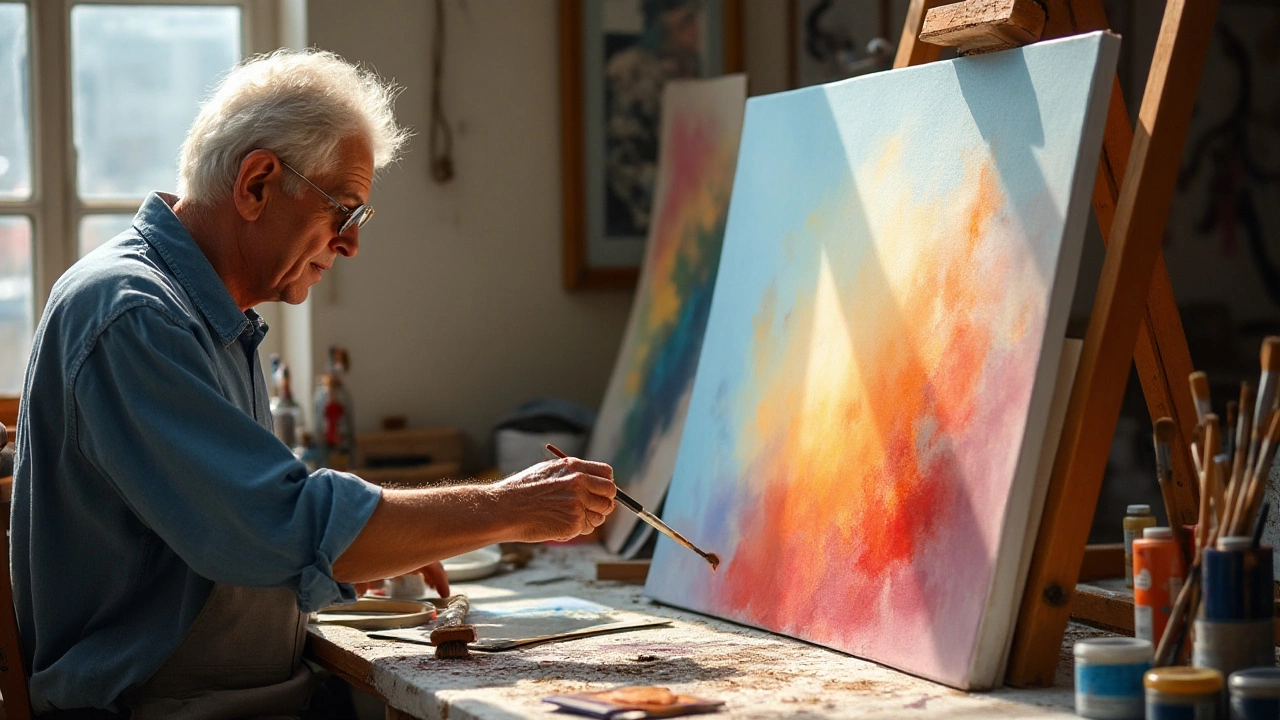Art Skills – Learn Painting, Drawing & Sculpture Quickly
If you want to improve your art fast, you need clear, bite‑size advice you can try right now. This page gathers the most useful tips from our recent articles so you can practice without wasting time. Whether you work with oil, watercolor, clay, or pencil, the basics stay the same: learn the common mistakes, fix them, and add simple habits that build confidence.
Painting Techniques You Can Use Today
Oil painting feels intimidating because the paint dries slow and mistakes can look permanent. Our guide How to Fix Mistakes in Oil Painting: Wet, Tacky, and Dry Layer Repairs breaks the process into three easy steps. If the paint is still wet, gently wipe with a soft cloth and re‑apply the correct colour. For tacky layers, use a little varnish to smooth the surface before glazing. When the paint is fully dry, scrape off the error with a palette knife, then fill the gap with a thin glaze that blends into the surrounding tones. The same logic works for acrylics – just replace varnish with a quick‑dry medium.
Want to know where to start in watercolor? What to Paint First in Waterballoon… (sorry, typo – the real title is "What to Paint First in Watercolor") shows that starting with light washes creates a flexible base. Paint the sky or background first, let it dry, then add darker details on top. This layering prevents the paper from tearing and keeps colours vibrant.
Portrait artists often wonder if acrylic or oil is easier. In Acrylic vs Oil: Which Is Easier for Painting Portraits? we compare drying time, brush handling, and colour blending. Acrylic dries fast, so you can correct mistakes quickly, but you lose the smooth transitions oil gives you. Try a mixed approach: start the underpainting in acrylic, then switch to oil for the final glaze. It gives you the best of both worlds without a steep learning curve.
Getting Started with Sculpture and Drawing
Many beginners think sculpture requires expensive stone or bronze. Our article Easiest Sculptures for Beginners: Simple Ideas and Fun Projects to Try proves otherwise. Begin with air‑dry clay or even recycled cardboard. Shape basic forms like cubes, spheres, and simple animal figures. The key is to keep tools minimal – a kitchen knife, a rolling pin, and a sponge are enough. Once you’re comfortable, move to stronger materials like plaster or cheap wire armatures.
Materials matter for cost. In Cheapest Materials for Sculpture: Low‑Budget Creative Options Explained we list everyday items that work surprisingly well: plaster of Paris mixed with sand, papier‑mâché, and even old plastic bottles. Doing a quick cost‑per‑cubic‑inch calculation helps you stay within budget while experimenting with texture.
Drawing often feels easier than painting, but many skip the crucial step of sketching before you start. Do You Sketch Before Watercolor? Pros, Cons, and Smart Tips for Artists explains that a light pencil layout saves you from pausing mid‑paint to fix proportions. Use a 2H pencil for faint lines, then build up colour. If you prefer a freer approach, try “blind drawing” – outline the main shapes without looking at the reference, then add details later. This forces you to focus on composition rather than copying.
Finally, don’t forget the power of the rule of thirds in composition. The quick guide Rule of Thirds Guide for Stunning Landscape Paintings shows how placing key elements along the grid lines makes a scene feel balanced. Apply the same rule to portrait placement and sculpture staging for a professional look.
All these tips are designed to fit into a busy schedule. Pick one technique, practice for 15 minutes a day, and watch your confidence grow. Keep revisiting this page for fresh ideas – the art world moves fast, but the basics stay reliable.

23 Oct 2024
The wash technique in oil painting is a dynamic and versatile method that artists use to create luminous effects and soft gradations. This technique involves using thinned oil paints to create translucent layers that allow light to interact with the painting surface in a unique way. Understanding the interaction of oil paints with the canvas is fundamental in achieving this beautiful method. Explore the steps, tips, and common mistakes to watch out for while enhancing your artistry with washes.
Continue reading...
